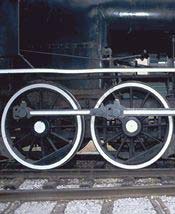Physics and Astronomy
This area deals with the fundamental laws and building blocks of nature and how they interact, the properties and the behavior of matter, and research into space and time and their structures.
innovations-report provides in-depth reports and articles on subjects such as astrophysics, laser technologies, nuclear, quantum, particle and solid-state physics, nanotechnologies, planetary research and findings (Mars, Venus) and developments related to the Hubble Telescope.

European and Canadian space agencies announce communications contract for International Space Station
The European Space Agency (ESA) and the Canadian Space Agency (CSA) have announced a call to communication companies who are interested in undertaking a contract for brand communication services related to the International Space Station (ISS).
The contract is a significant move for ESA and CSA who want to heighten the profile of the ISS within Europe and Canada to help meet the commercial objectives of the Space Station.
The two organisations want to hear expressions of interest

Was adolescent galaxy a gang member?
Light bending reveals clumps of matter around early galaxy.
European astronomers have got their first glimpse of the soup of matter that surrounded a galaxy in the early Universe, just 3 billion years after the Big Bang. Their results provide clues as to how this matter got together, which is crucial to understanding why the Universe looks the way it does today 1 .
The 12-billion-year-old galaxy is called MS 1512-cB58. It is not the earliest galaxy known, but

Smooth surfaces are tacky at small scales
Spot-welds stick sliding metals
Two smooth, cold, metal surfaces are like pieces of tacky Sellotape. They form tiny spot welds that have to be broken apart before they can slide over each other. This, claim two physicists in California 1 , is another reason why metals stick as they slip if they are pressed together and pushed.
Such microscopic causes of friction and wear are increasingly important as the scale of mechanical engineering shrinks to below what

VIMOS – a Cosmology Machine for the VLT
Successful Test Observations With Powerful New Instrument at Paranal
One of the most fundamental tasks of modern astrophysics is the study of the evolution of the Universe. This is a daunting undertaking that requires extensive observations of large samples of objects in order to produce reasonably detailed maps of the distribution of galaxies in the Universe and to perform statistical analysis.
Much effort is now being put into mapping the relatively nearby space and the

Light to entangle mirrors
Bouncing laser beams could bring quantum strangeness to the everyday world.
The quantum world of atoms and subatomic particles is full of intuition-defying phenomena such as objects existing in two different states at once. We don’t normally have to worry about such weirdness impinging on our everyday macroscopic world. But Italian physicists have worked out how to invest something we can see and touch with quantum strangeness.
Stefano Mancini, of the University of Mila

UVES Investigates the Environment of a Very Remote Galaxy
Surplus of Intergalactic Material May Be Young Supercluster Observations with ESO`s Very Large Telescope (VLT) have enabled an international group of astronomers to study in unprecedented detail the surroundings of a very remote galaxy, almost 12 billion light-years distant. The corresponding light travel time means that it is seen at a moment only about 3 billion years after the Big Bang. This galaxy is designated MS 1512-cB58 and is the brightest known at such a large distance and